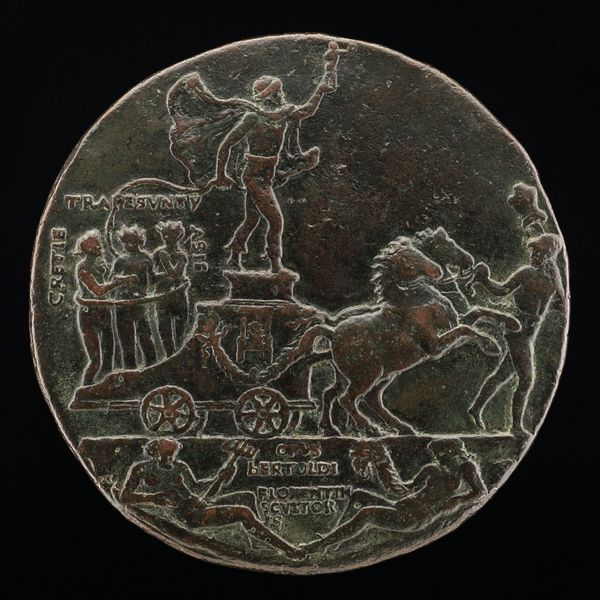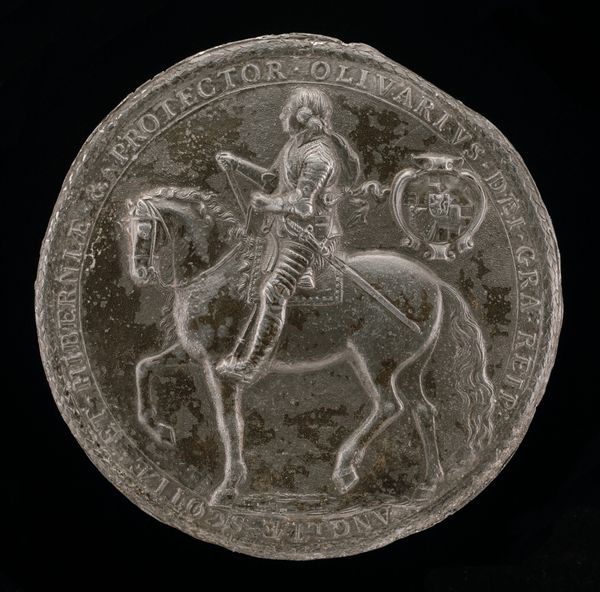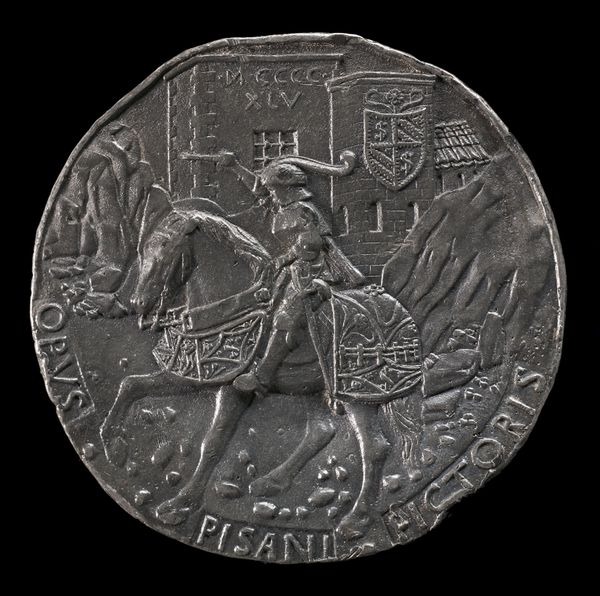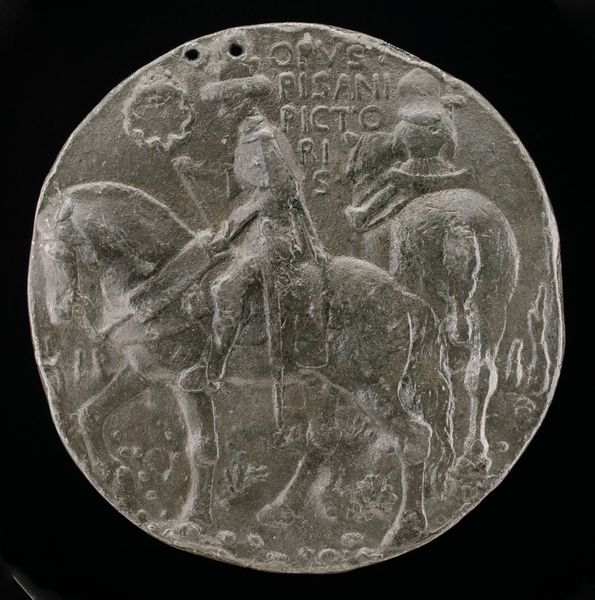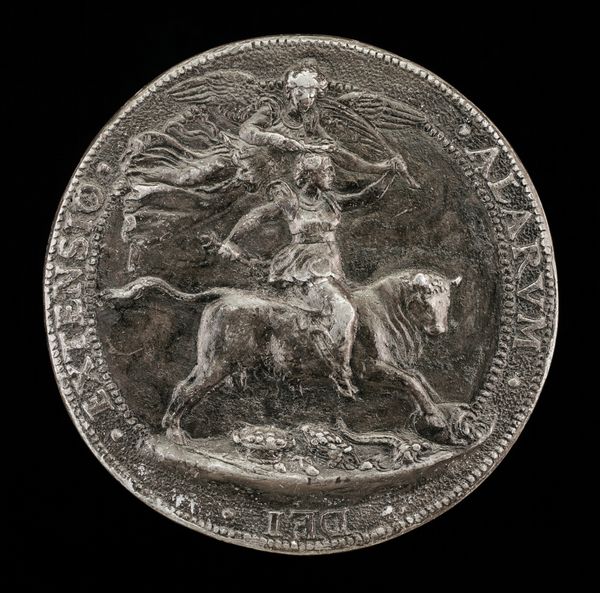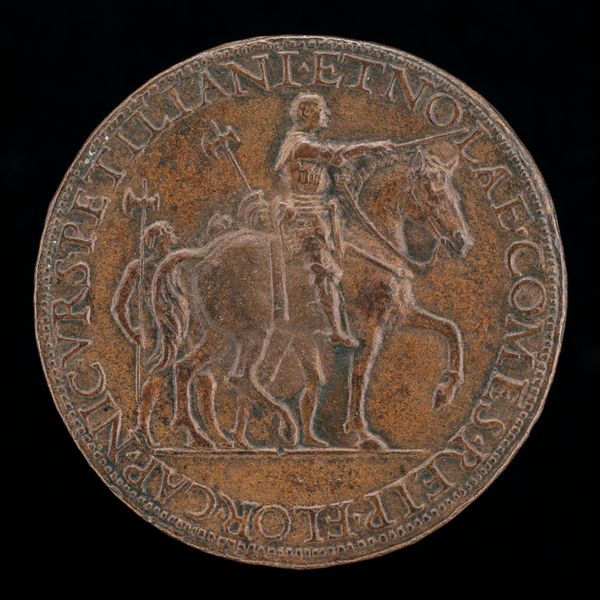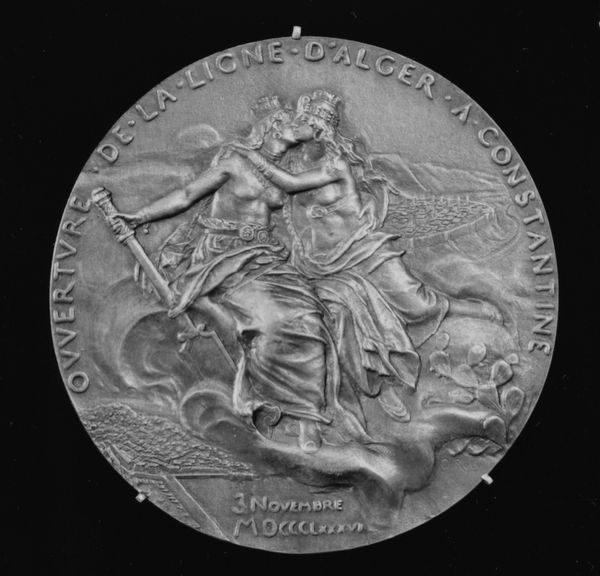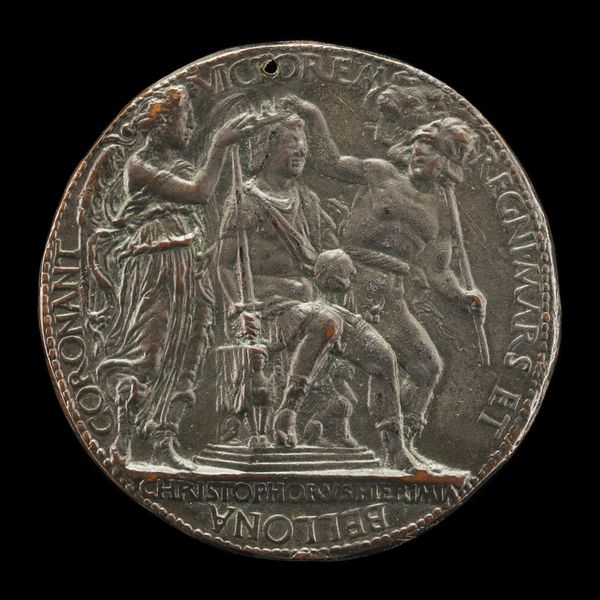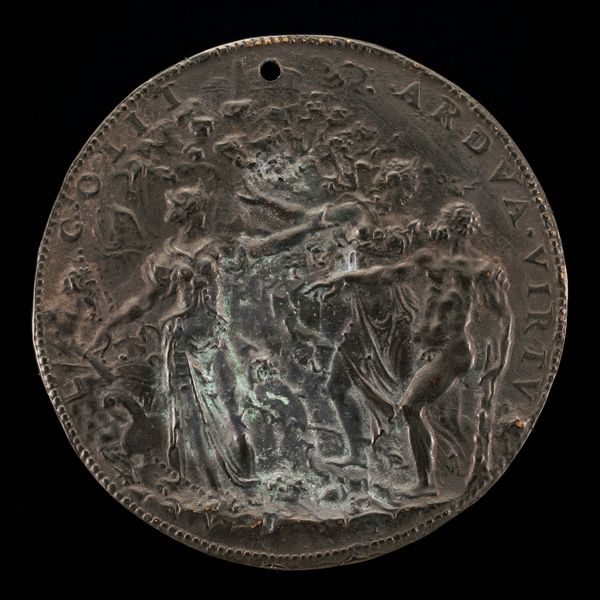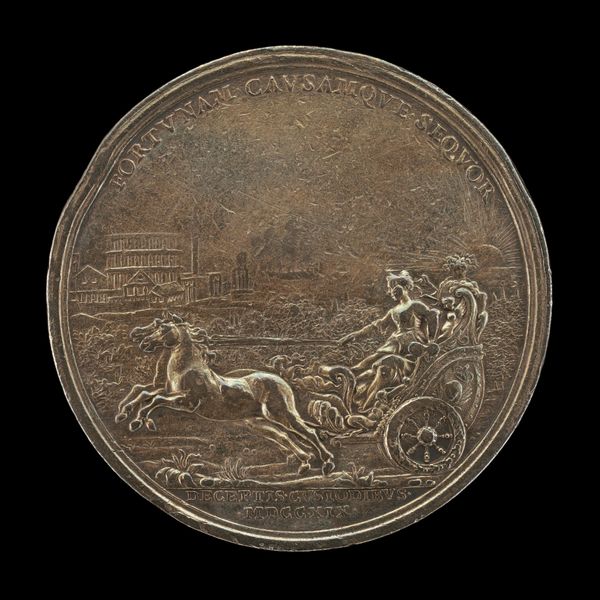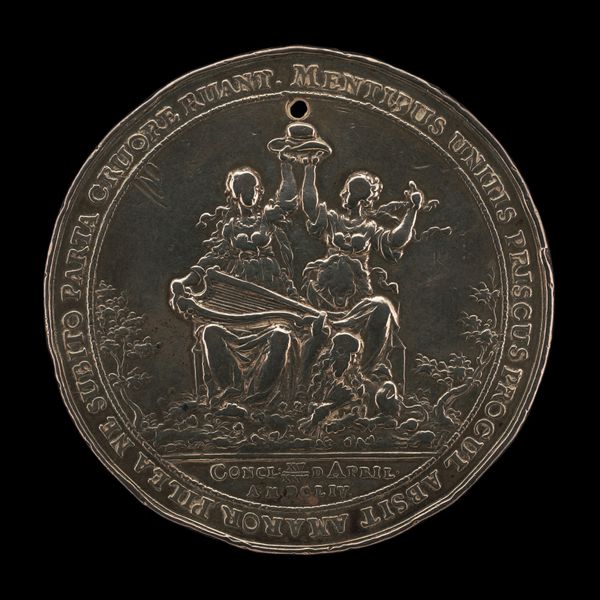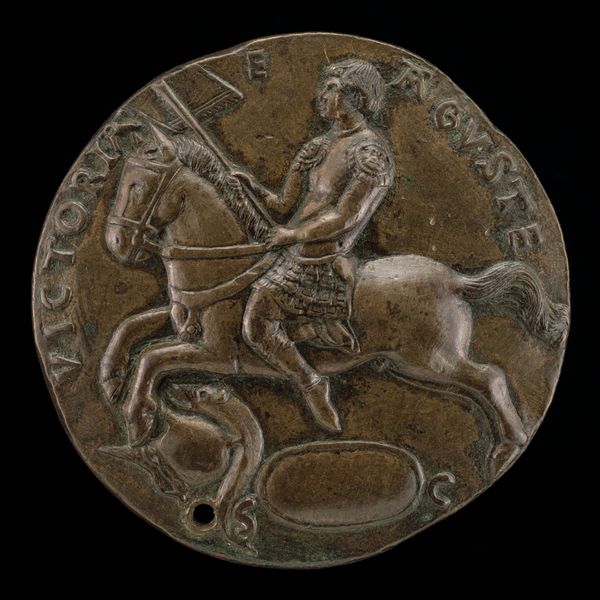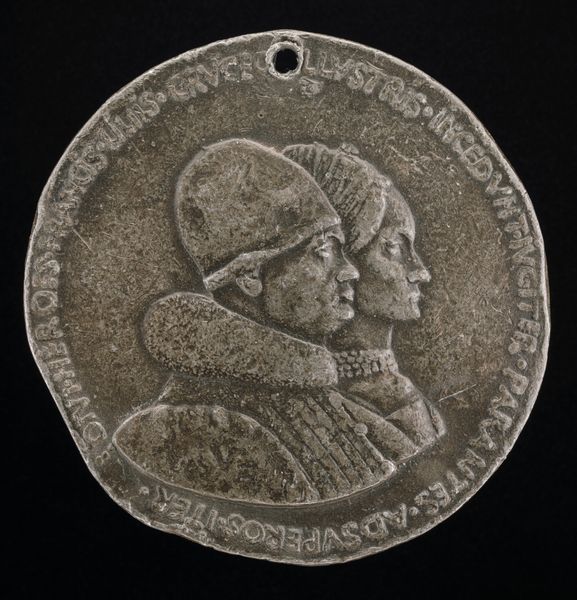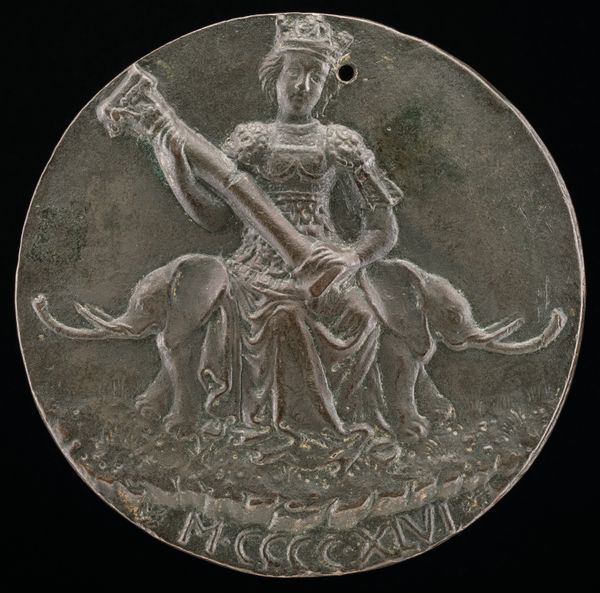![Sigismondo on a Charger before a Fortress [reverse] by Pisanello](/_next/image?url=https%3A%2F%2Fd2w8kbdekdi1gv.cloudfront.net%2FeyJidWNrZXQiOiAiYXJ0ZXJhLWltYWdlcy1idWNrZXQiLCAia2V5IjogImFydHdvcmtzLzUyYTk5NTJhLWRhMTItNGM4Mi04YjBhLTI5NTQ5YzI2NzUwNi81MmE5OTUyYS1kYTEyLTRjODItOGIwYS0yOTU0OWMyNjc1MDZfZnVsbC5qcGciLCAiZWRpdHMiOiB7InJlc2l6ZSI6IHsid2lkdGgiOiAxOTIwLCAiaGVpZ2h0IjogMTkyMCwgImZpdCI6ICJpbnNpZGUifX19&w=3840&q=75)
metal, relief, bronze, sculpture
#
portrait
#
medal
#
metal
#
sculpture
#
relief
#
bronze
#
11_renaissance
#
sculpture
#
history-painting
#
italian-renaissance
Dimensions: overall (diameter): 10.34 cm (4 1/16 in.) gross weight: 385.24 gr (0.849 lb.) axis: 12:00
Copyright: National Gallery of Art: CC0 1.0
Editor: So, this bronze medal, "Sigismondo on a Charger before a Fortress," was created by Pisanello around 1445. It's really striking – the way he's depicted on horseback, the fortress in the background... there's a strong sense of power and authority being projected. How do you read into that visual language within the context of the Renaissance? Curator: It’s more than just power; it's a constructed identity, meticulously crafted and circulated. Sigismondo Malatesta was a controversial figure. Pisanello's medal is a deliberate act of self-fashioning. Consider how this piece functions within the context of Renaissance portraiture. To what extent is it simply recording reality, and where is it actively shaping perception? Think about the implications of portraying Sigismondo as a leader, specifically in relation to the fortifications. Is it a proclamation of dominance, or something more nuanced? Editor: I guess it’s like he’s trying to solidify his image… control his narrative, almost. I hadn’t thought about the controversy aspect, but it makes sense that he'd want to use art to portray himself positively, considering the times. So, the medal becomes a kind of propaganda piece? Curator: Precisely. Think about how portraiture often functions to legitimize power. And consider what the implications might be if Pisanello, as the artist, also imbues his own position and perspective in the medal. How are ideas about masculinity and leadership being communicated in this work? And how might those have reinforced existing societal structures of the time? The questions of representation, power, and societal norms all coalesce in this small object. Editor: I see your point, I'd considered it from an art-historical angle, looking at style and influence, but I see now that exploring the historical and social context surrounding this piece uncovers fascinating insights that aren't so immediately apparent. Curator: Exactly, art like this can serve as a springboard to discuss broader social, political and economic issues. Examining visual culture is always connected to what is happening outside of the artwork.
Comments
No comments
Be the first to comment and join the conversation on the ultimate creative platform.
